
Literary analysis serves as a vital tool for engaging with texts at a deeper level, transcending mere surface understanding to uncover the underlying meanings and nuances. This process is essential for readers aiming to appreciate literature’s complexities, as it nurtures critical thinking and hones interpretation skills. By applying a systematic approach to various literary works, one can discern how authors communicate themes, character motivations, and societal critiques subtly embedded within their narratives.
Understanding literature through the lens of analysis allows for a more profound engagement with the material, as it encourages readers to ask questions and explore diverse perspectives. Rather than accepting a text at face value, literary analysis promotes a more inquisitive mindset. This approach not only enhances enjoyment of the text but also enriches a reader’s appreciation for the craft of writing itself.
Among the key techniques employed in literary analysis are close reading and thematic analysis. Close reading requires an in-depth examination of the text, focusing on the intricacies of language, structure, and imagery. This method emphasizes the significance of each word and phrase, unveiling layers of meaning that might otherwise be overlooked. Meanwhile, thematic analysis involves identifying and exploring recurring themes within the text, providing insight into the broader messages that the author intends to convey. Through these techniques, readers can unlock the multiple dimensions of meaning woven into literary works, enhancing their overall understanding and appreciation of literature.
As we delve further into this discussion, we will elaborate on these techniques and their applications in literature, illustrating how they can lead to richer interpretations and a more fulfilling reading experience.
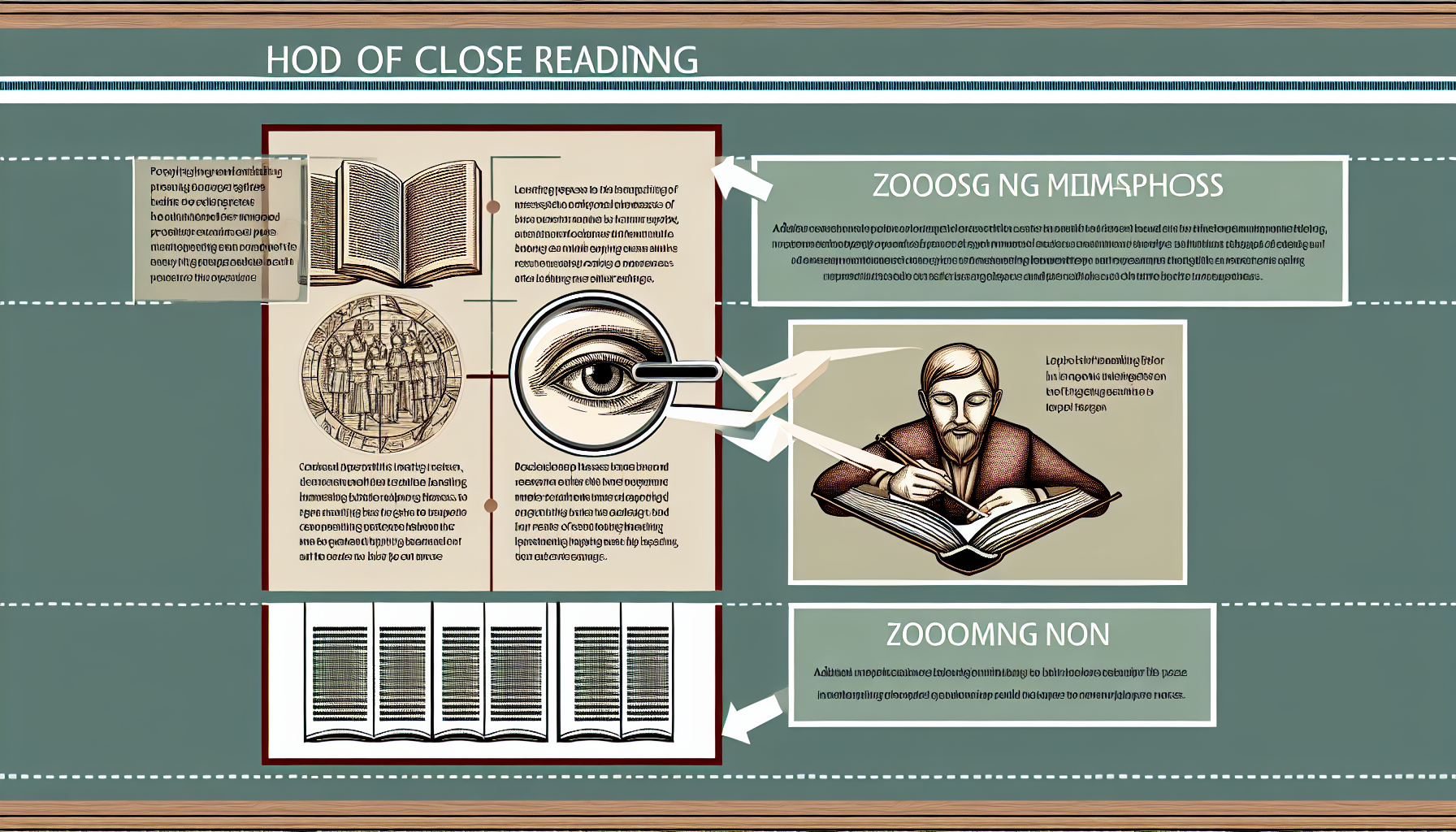
Close reading is a critical technique in literary analysis that emphasizes the careful and detailed examination of a specific passage or text. This method involves paying close attention to the language and structure employed by the author, allowing readers to uncover deeper meanings and interpretations that may not be evident at first glance. By scrutinizing the text, readers can engage with the nuances of the narrative, enhancing their understanding of the author’s intention and the emotional weight of the work.
To effectively perform close reading, begin by selecting a particular passage that resonates with you. This focused approach enables deeper exploration of the text’s themes and motifs. As you read, take note of any striking language or imagery that stands out. Word choice is a crucial element in close reading, as specific terms can convey connotations, evoke emotions, and illustrate complex ideas. Consider how the diction influences the overall tone and mood of the passage.
Additionally, analyze sentence structure and punctuation. Look for varied sentence lengths, use of enjambment, or deliberate fragments. These stylistic choices can significantly impact the rhythm of the text and guide your emotional response. Consider how the arrangement of words contributes to the overall meaning, allowing you to uncover layers of interpretation that may have previously gone unnoticed.
Moreover, it is important to consider context, both within the work itself and in relation to historical and social backgrounds. By situating the text in its larger framework, readers can gain insights into the subtle implications and thematic concerns expressed through the author’s language. Close reading, therefore, is not only an exploration of individual words and sentences but also a gateway to comprehending the profound significance embedded in literature.
Narrative structure refers to the organized framework that authors use to present their stories. It encompasses various components, crucial for shaping the overall experience of a literary work. By exploring narrative structure, readers can foster a deeper understanding of the themes, settings, and character developments within a text.
The primary elements of narrative structure include plot, setting, and point of view. The plot is the sequence of events that unfold within a story, typically consisting of stages such as exposition, rising action, climax, falling action, and resolution. Analyzing the plot allows readers to identify critical moments in the narrative, which often serve as pivotal points for character interactions and thematic revelations.
Setting plays an equally important role in narrative structure, encompassing the time and place where the story occurs. It provides context and background, influencing the characters’ motivations and actions. For instance, a story set in a dystopian future may evoke themes of survival and oppression, while a tale set in a quaint village might focus on community and tradition. By evaluating the setting, readers can gain insights into how the environment shapes the narrative.
Point of view, another essential component, refers to the perspective through which the story is told. Whether first-person, second-person, or third-person, the chosen point of view dramatically impacts the reader’s understanding of the characters and their motivations. An unreliable narrator, for example, may distort the truth, encouraging readers to question the reliability of the storyline.
In conclusion, dissecting the narrative structure of a literary piece enables readers to engage more deeply with the text. By critically analyzing the plot, setting, and point of view, one can uncover the layers of meaning within a story and appreciate the complexities of its characters and thematic explorations.
Character development stands as a fundamental pillar in the realm of literature, having the power to shape the narrative and evoke profound emotional responses from readers. Authors employ various techniques to create multi-dimensional characters, ensuring that they resonate with the audience and contribute meaningfully to the overarching themes of the work. Dialogue, actions, and motivations are central methods through which character complexity is achieved.
Dialogue provides insight into a character’s thoughts, intentions, and personality. Through carefully crafted exchanges, writers reveal not just what characters say, but also how they say it, which opens a window into their motivations and relationships with others. For instance, contrasting dialogue styles can signify differences in social status, emotional states, or personal backgrounds, thus deepening our understanding of their arcs and conflicts.
Actions, too, play a critical role in character development. The choices characters make—whether noble, selfish, or contradictory—inform readers about their moral compass and psychological depth. Analyzing these actions allows for a richer interpretation of the story. For example, a seemingly minor action can be pivotal, revealing hidden nuances or igniting broader themes within the narrative.
Furthermore, motivations anchor character development. Understanding what drives a character—be it ambition, love, revenge, or fear—elucidates their journeys and transformation throughout the story. Evaluating the evolution of this motivation over time can uncover significant shifts in character arcs, providing insight into how they relate to the central themes of the narrative.
For those looking to assess character development effectively, it is essential to consider these elements collectively. By examining the interplay of dialogue, actions, and motivations, readers can gain a nuanced understanding of characters, enhancing their overall reading experience and appreciation of the literary work.
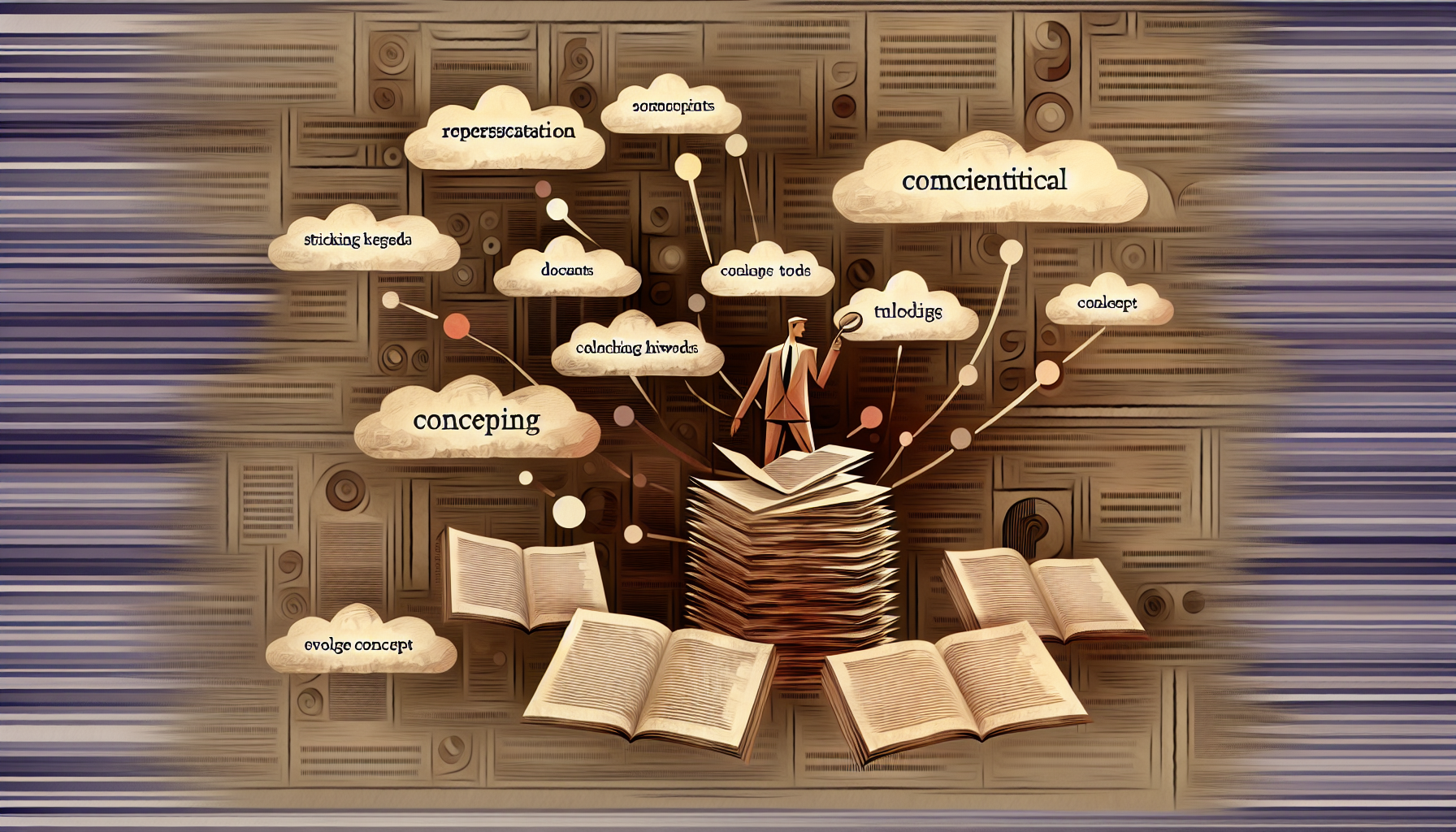
Thematic analysis is a fundamental method in literary interpretation that seeks to identify, analyze, and report patterns (themes) within a text. This approach allows readers to delve deep into the underlying messages and central ideas woven into the narrative, offering a richer understanding of the work’s significance. At its core, thematic analysis emphasizes the importance of not only recognizing the themes present but also exploring how these themes contribute to character development and the overall narrative structure.
When conducting a thematic analysis, the first step is to read the literary work attentively. As you progress through the text, it is crucial to take note of recurring motifs, symbols, and phrases that seem to resonate throughout the story. These elements often serve as gateways to uncovering the deeper meanings and central ideas within the work. It can be helpful to create a list of potential themes as they arise, allowing for a clearer picture of the narrative’s focus as you parse through the details.
In addition, observing character development is integral to thematic analysis. Characters often embody the themes and provide a personal lens through which readers can engage with the central ideas. Consider how a character’s journey reflects or contradicts the identified themes. For instance, a character’s transformation might highlight themes of resilience or self-discovery, thereby enriching the narrative texture.
Furthermore, the narrative structure itself can influence the themes present in the text. Analyze how the arrangement of events or shifts in perspective may highlight specific themes. For instance, non-linear storytelling can create a layered understanding of time and consequences, impacting the interpretation of central ideas. Through a careful examination of these elements, thematic analysis becomes a powerful tool in unlocking the depths of literary works, allowing readers to appreciate the complexities of the narrative fully.
Symbolism plays a crucial role in literature, acting as a vehicle for authors to communicate complex ideas and evoke deep emotions. Through the use of symbols, writers can convey meanings that extend beyond the literal interpretation of words, allowing readers to explore the intricate layers of a text. For instance, a seemingly simple object, like a bird, may symbolize freedom, hope, or even entrapment depending on the narrative context. Understanding these symbols can enhance a reader’s appreciation and comprehension of the themes and messages embedded within a work.
Authors often incorporate symbols to create connections between tangible elements and abstract concepts, enriching the text and prompting readers to engage in deeper analysis. To effectively analyze symbolism, it is essential to consider the context in which the symbols appear. Contextual analysis involves paying attention to the circumstances surrounding the symbols, including the setting, character interactions, and plot developments. This approach helps reveal how symbols function within the story and contribute to its overarching themes.
Additionally, recognizing cultural references can significantly aid in identifying and interpreting symbols. Symbols may hold specific meanings within particular cultures or historical contexts, which can illuminate an author’s intent. For example, a particular color may symbolize different emotions across various cultures—red may signify love in some societies while representing danger in others. Readers are encouraged to research and consider the cultural backdrop of a text to fully grasp the depth of its symbols.
As readers navigate the complexities of a narrative, they should actively seek out symbols, questioning their purpose and relevance to the story. By employing these techniques—examining context, recognizing cultural implications, and engaging with the text on a symbolic level—readers can unlock deeper meanings and enhance their literary experiences. Through the intentional analysis of symbolism, one can achieve a richer understanding of a text’s emotional and thematic layers.
Critical thinking is essential for delving deeper into literature, as it encourages readers to engage actively with the text rather than passively absorbing information. This cognitive process involves analyzing, evaluating, and synthesizing information to understand different layers of meaning within a literary work. By employing critical thinking skills, readers can challenge superficial interpretations and uncover complex themes, symbols, and character motivations that enrich their understanding of the text.
Being a reflective reader is an integral part of this process. It requires individuals to confront their own biases and preconceived notions, allowing for a more objective analysis of the literature. Acknowledging personal biases helps readers approach texts with an open mind, making it easier to grasp diverse perspectives and appreciate the multifaceted messages that literature often conveys. This is particularly vital in a multicultural literary landscape, where various cultural backgrounds influence the creation of meaning.
To enhance critical thinking skills, readers can engage in several practical exercises. One effective method is to analyze literature through the lens of various theoretical frameworks—such as feminism, Marxism, or post-colonialism—encouraging readers to view the same text from multiple viewpoints. Additionally, discussing literature in groups fosters dialogue, allowing individuals to articulate their interpretations and consider alternative viewpoints presented by peers. Such collaborative discussions can illuminate biases inherent in one’s understanding, promoting a richer interpretation of the text.
Another useful practice is questioning assumptions within a text. This can be achieved by asking probing questions about the author’s intent, the context of the writing, and the implications of certain narrative choices. For instance, questioning the reliability of the narrator can alter one’s interpretation of events and characters. By cultivating critical thinking and implementing these exercises, readers can unlock deeper understanding and appreciation of literature.

To achieve a comprehensive analysis in literature, it is imperative to integrate various literary techniques that enrich our understanding of texts. Combining close reading, thematic analysis, symbolism, and character development not only enhances our engagement with literature but also reveals the interconnectedness of these methods. For instance, a close reading of a specific passage can unveil unique word choices and syntax that set the tone or illuminate a character’s emotional state. This detailed examination can then be complemented by thematic analysis, where we identify broader ideas and motifs that the author explores throughout the work.
Furthermore, considering symbolism within the text can deepen our comprehension of both theme and character. A symbol, such as a recurring object or color, often encapsulates critical elements of the narrative and its themes. When we analyze this symbol alongside character development, we can observe how specific characters react to or embody these symbols, thereby enriching our understanding of their motivations and the nuances of their relationships. For example, in a novel where water symbolizes purification, examining how different characters interact with and are affected by water can reveal significant insights into their development and the overarching themes of redemption.
Integrating these techniques allows readers to uncover layers of meaning that might otherwise remain hidden. For instance, while thematic analysis might show that a work addresses the persistence of memory, close reading can pinpoint language that evokes nostalgia, and character development can illustrate how memory shapes the actions and identities of the characters. By examining a text through multiple lenses, we cultivate a more enriched interpretation and engage more deeply with the author’s intentions and insights.
To illustrate the application of deeper text interpretation techniques in literature, we will analyze F. Scott Fitzgerald’s iconic novel, The Great Gatsby. This literary work is ripe for exploration, offering vivid characters, a rich narrative structure, and profound themes that reflect the complexities of the American Dream.
We begin with a close reading of the opening chapter, focusing on Fitzgerald’s use of language and imagery. The novel opens with the narrator, Nick Carraway, providing a reflective tone that establishes a sense of nostalgia and foreboding. By examining specific phrases and motifs, such as the recurring reference to the green light, readers can uncover deeper meanings related to aspiration and disillusionment.
The next step involves assessing the narrative structure. Fitzgerald employs a non-linear timeline, interspersing past events with present reflections. This technique not only reinforces the theme of memory but also allows readers to witness how the characters’ pasts influence their current actions. As we dissect the plot’s progression, we can better appreciate the orchestration of conflict and resolution, enhancing our interpretation of the narrative’s emotional weight.
Character analysis is a crucial component of our exploration. Gatsby, Daisy Buchanan, and Tom Buchanan serve as representations of various facets of society. By delving into their motivations and relationships, we can identify underlying tensions and societal critiques. For instance, Gatsby’s relentless pursuit of wealth and status contrasts sharply with the hollowness of the affluent elite, highlighting the illusory nature of the American Dream.
Finally, we can explore the central themes of the novel, such as class disparity, the illusion of love, and the quest for identity. Each element contributes to a rich tapestry that invites multiple interpretations. Analyzing these themes collectively, we unlock a deeper understanding of the text’s commentary on human experience and societal values.

As readers engage with literature, honing their interpretation skills becomes crucial not only for deeper understanding but also for enhancing their overall appreciation of texts. To solidify these newly acquired analytical abilities, it is beneficial for individuals to actively test their interpretations. This can be achieved through various methods, including joining discussion groups, participating in literary forums, or simply initiating conversations with friends and family about the themes and symbols identified in a particular work. These discussions often yield diverse perspectives, which can challenge and expand one’s own understanding of the text.
Another effective way to assess your interpretation skills is through feedback. Seeking opinions from peers who might have encountered the same literary work offers invaluable insights. They may have noticed elements that went unnoticed, thereby enriching the overall analysis. When receiving feedback, it is essential to remain open-minded, as constructive criticism can appreciate the value of different viewpoints and improve critical thinking skills. Additionally, this engagement with others can foster a supportive learning community where members encourage one another to explore varied interpretations.
The process of literary analysis is inherently ongoing and evolves as readers gain new experiences and perspectives. Regular practice is key; thus, revisiting texts after some time can lead to different interpretations due to the changes in one’s own life experiences. To facilitate this continual growth, readers should document their thoughts and reflections over time, perhaps in a reading journal or blog. This not only tracks personal evolution in understanding but also sets the stage for future discussions that can deepen one’s analytical capabilities. Ultimately, developing interpretation skills is a journey that requires patience, effort, and a commitment to lifelong learning.
Looking to advertise, promote your brand, or explore partnership opportunities?
Reach out to us at
[email protected]
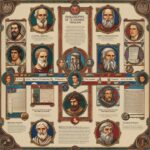

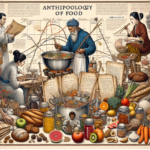

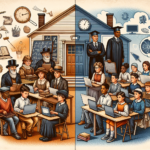



Chose where you want to study, and we will let you know with more updates.